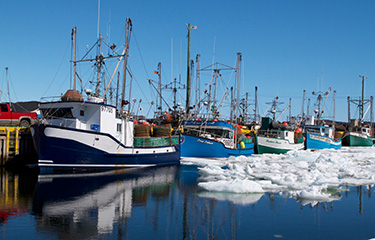Negotiations in the Canadian province of Newfoundland and Labrador between the Fish Food and Allied Workers Union (FFAW) and the Association of Seafood Producers (ASP) on the price processors will pay to fishermen for snow crab have once again failed to result in an agreement, sending the decision on pricing to the Standing Fish Price-Setting Panel.
The ASP and FFAW negotiate a minimum price to be paid to harvesters, and in the event the two groups can’t reach an agreement on their own, both make pricing proposals to the Standing Fish Price-Setting Panel. The panel, comprised of three members, then decides between the two prices. Both organizations are making their final offers to the Standing Fish Price Setting Panel on Thursday, 30 March, with a decision expected the following week.
The two organizations began negotiations in 2023 with a positive outlook on achieving a mutally agreed-upon result. On 16 February, the ASP and FFAW announced a “shared commitment” to work together on the challenges facing the crab fishery.
“In light of the challenges we are facing this year, we have agreed that our best approach is to collectively discuss the challenges the crab fishery is facing and to seek support from both levels of government to ensure that we have a successful crab fishery in 2023,” ASP Board Chair Paul Grant said in a release.
FFAW President Greg Pretty said collaboration is “the best route” for both fish harvesters and plant workers in the province.
“With a commitment from stakeholders to abide by the Collective Bargaining Act this year and important strides towards increased transparency, this is currently the best option for our members to avoid a repeat of 2022,” Pretty said.
But with the fishery facing the same price-setting process in 2023 as it did in 2022, old disagreements between the two sides bubbled up. In 2022, negotiations became contentious as the two groups put forward the largest gap between their respective prices in the history of negotiations – with the FFAW pushing for CAD 9.05 (then USD 7.22, EUR 6.54) and the ASP pushing for CAD 7.60 (then USD 6.06, EUR 5.49)
The disagreement led to hundreds of fishermen in Newfoundland and Labrador protesting at multiple government buildings against the price-negotiation process.
The snow crab fishery’s struggles in 2022 didn’t end with a price being set. Originally fishermen and processors expected a banner year for fishing and prices after a strong 2021 – but the market suddenly plummeted and prices virtually collapsed in the span of weeks. The drop was so bad that the ASP declared that the market was “not functioning in a normal manner” and that it was “compelled to respond” as some buyers became reluctant to place any orders. The original CAD 7.60 price – initially though too low by fishermen – was renegotiated down to CAD 6.22 (then USD 4.91, EUR 4.62) in mid-May, a price that processors said was still leaving slim margins.
The pricing struggle led the province to commission an independent review the Fishing Industry Collective Bargaining Act, which recommended multiple changes to the price-setting panel – among which is the ability for the panel to be permitted, “in its discretion,” to reject both final offers. The review also recommended that the negotiations should commence earlier so that a price could be set before the start of the 2023 crab fishing season.
The provincial government ultimately adopted legislation that approved some of the recommendations – including allowing the pricing decision to be made by just the chairperson alone at the joint request of both parties.
But according to the FFAW, some of the amendments to sections 19.1 to 19.5 of the bargaining act have resulted in the “collapse” of the pricing formula for snow crab. The union has been in talks with the Canada Department of Fisheries and Oceans (DFO) regarding fishermen’s concerns with the ongoing struggles in the snow crab industry.
The DFO announced on 30 March that the quota for the snow crab fishery would see an overall increase of 8.4 percent from 2022, to 54,727 metric tons (MT). The 3LNO area will see the largest quota, at 32,224 MT, followed by 3K with 11,591 MT, 3Ps with 8,898 MT, 2HJ with 951 MT, 4R3Pn with 613 MT, and CPS Trap Survey with 450 MT.
Photo courtesy of Lynn A/Shutterstock







